Inwood Butterfly Sanctuary
My good friend Stephanie Coggins had been telling me about the Inwood Butterfly Sanctuary at the corner of Isham Street and Seaman Avenue. The Church of the Good Shepherd in the Inwood section of Manhattan donated its vacant corner for this project. Here, Keith de Cesare has been planting a garden filled with milkweed for the sustenance of the beleaguered Monarch Butterfly. Milkweed is the sole food for the Monarch butterfly caterpillar.
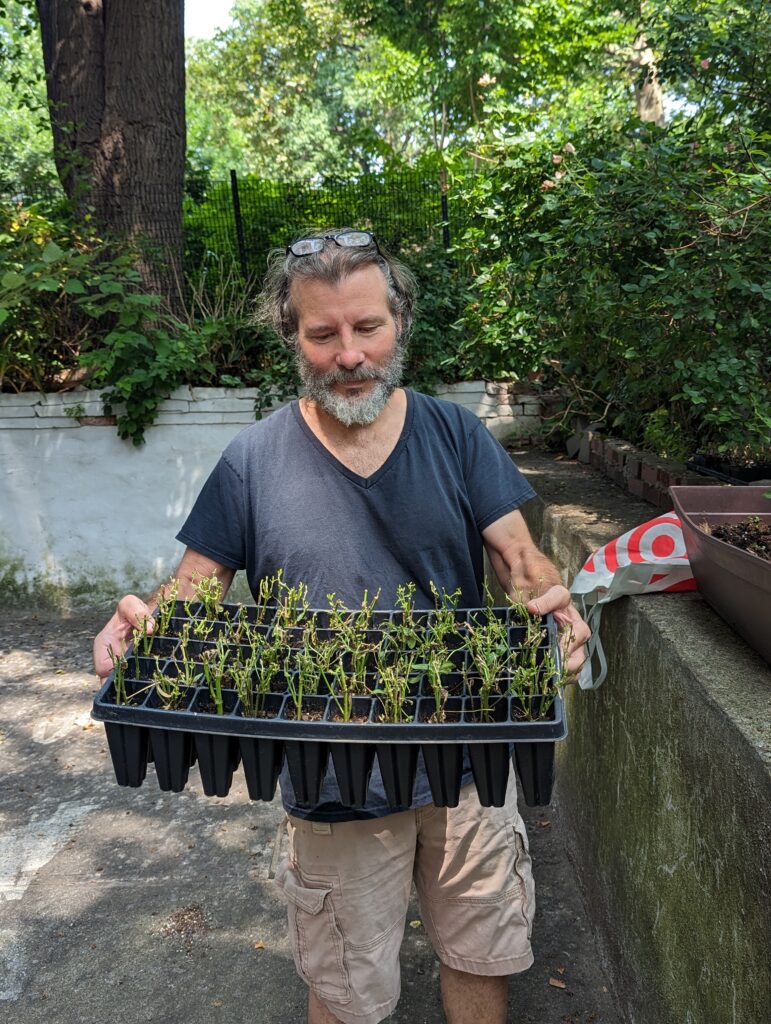
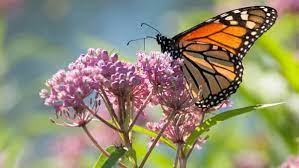
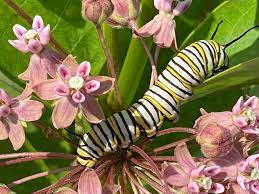
What started out as a small private endeavor has turned into a neighborhood sensation; people stop by to chat and the area has become a centerof general neighborliness. Keith hopes to expand this project to other areas.
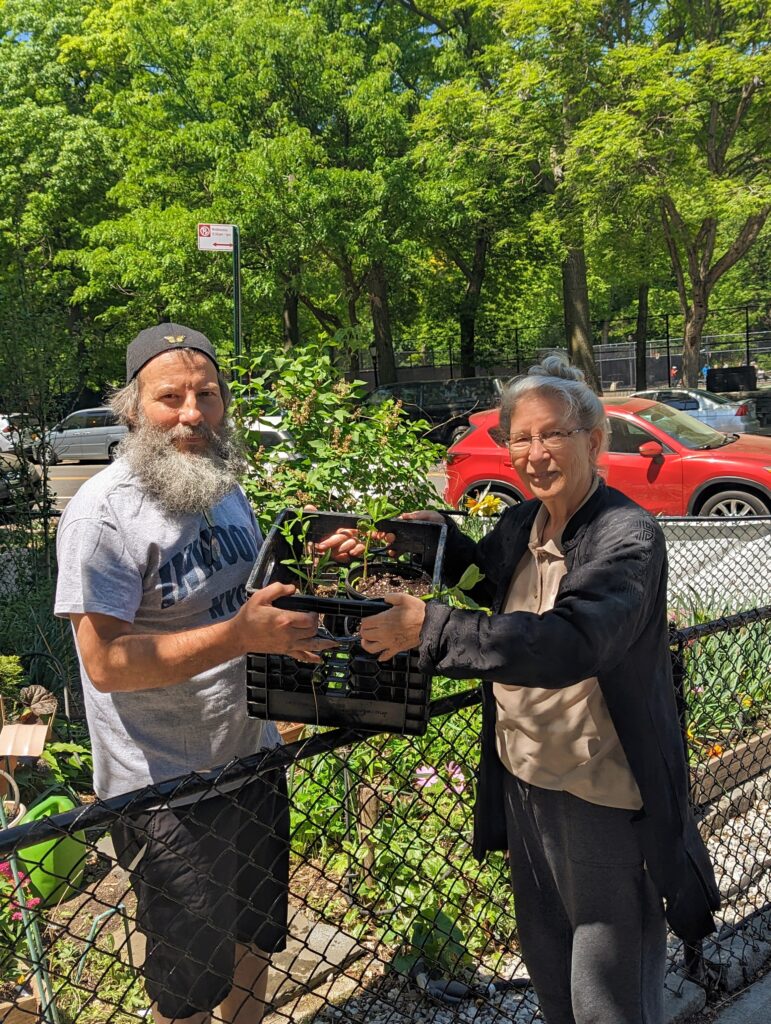
Finally, one Sunday Stephanie succeeded in getting me to accompany her to the garden. I had a wonderful time talking with Keith about his efforts and plans for future gardens. I also came home with two milkweed plants for my garden. Every few years I buy a milkweed plant and every few years said plant dies. Maybe I’ll have better luck with Keith’s plants.
Unknown Seeds
Returning to the car, I glanced down at the tree pit along the curb. Lying on the ground, were some black, flat and very hard, 1” seeds.
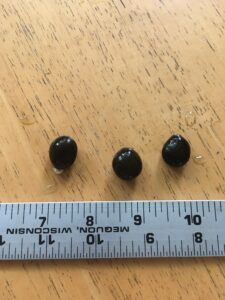
I did not recognize them but looking up at the tree growing in the pit, they were clearly from the Fabaceae family originally known as the Leguminosae
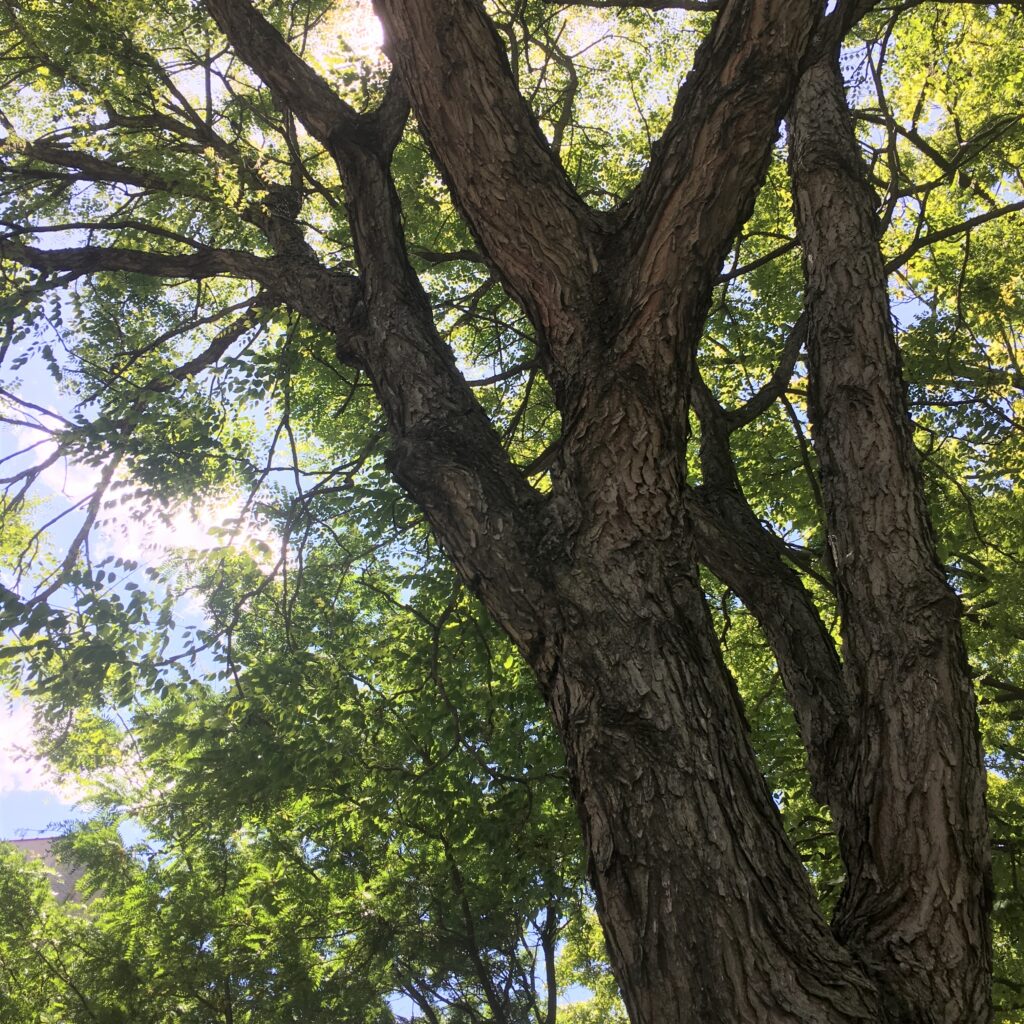
This is the familiar legume family, including among them the important crops of peas and beans. This family has many forms including trees, shrubs and both perennial and herbaceous plants over 765 genera and nearly 20,000 species. The possible identifying characteristic was the feathery pinnately compound leaf seen in the beautiful but invasive mimosa trees (Albizia julibrissin) and other member of the Fabaceae family such as vetch ( Vicia cracca).
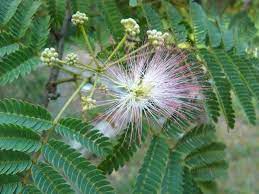
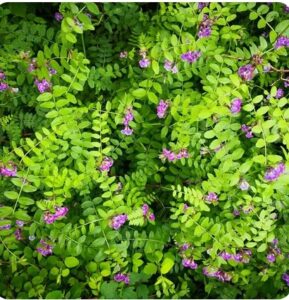
What is a Pinnately Compound Leaf?
In a simple leaf the body of the leaf is undivided. Compound leaves have a divided leaf body so the leaf is actually made up of leaflets. When leaflets themselves are further divided into smaller, feathery leaflets they are called pinnately compound leaves.
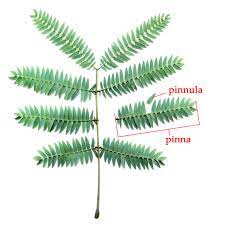
Sleuthing
However, now I had about a dozen seeds and no idea what species they represented. My first resource is always iNaturalist , a worldwide scientific database of plants, insects, birds and animals. It offers identifications of the uploaded pictures and creates a database for future projects about our changing world where numbers and sightings by date or other variables can be accessed. iNaturalist suggested that one of the possibilities was the Kentucky Coffeetree. Then it was just a matter of time, checking online databases to find a match to the seed.
Germinating the Seed
Meanwhile, I have always enjoyed cultivating trees either from seedlings found in my garden or from seeds that I have picked up while enjoying nature. Not all seeds germinate easily but I decided to try. Most seeds require cold stratification, meaning that they need their dormancy broken by exposure to cold moist conditions for a period of time which is accomplished by winter temperatures outdoors or by putting your seeds in a refrigerator for several weeks. I figured that cold stratification had already occurred since the seed pods had probably been lying in the tree pit over the winter.
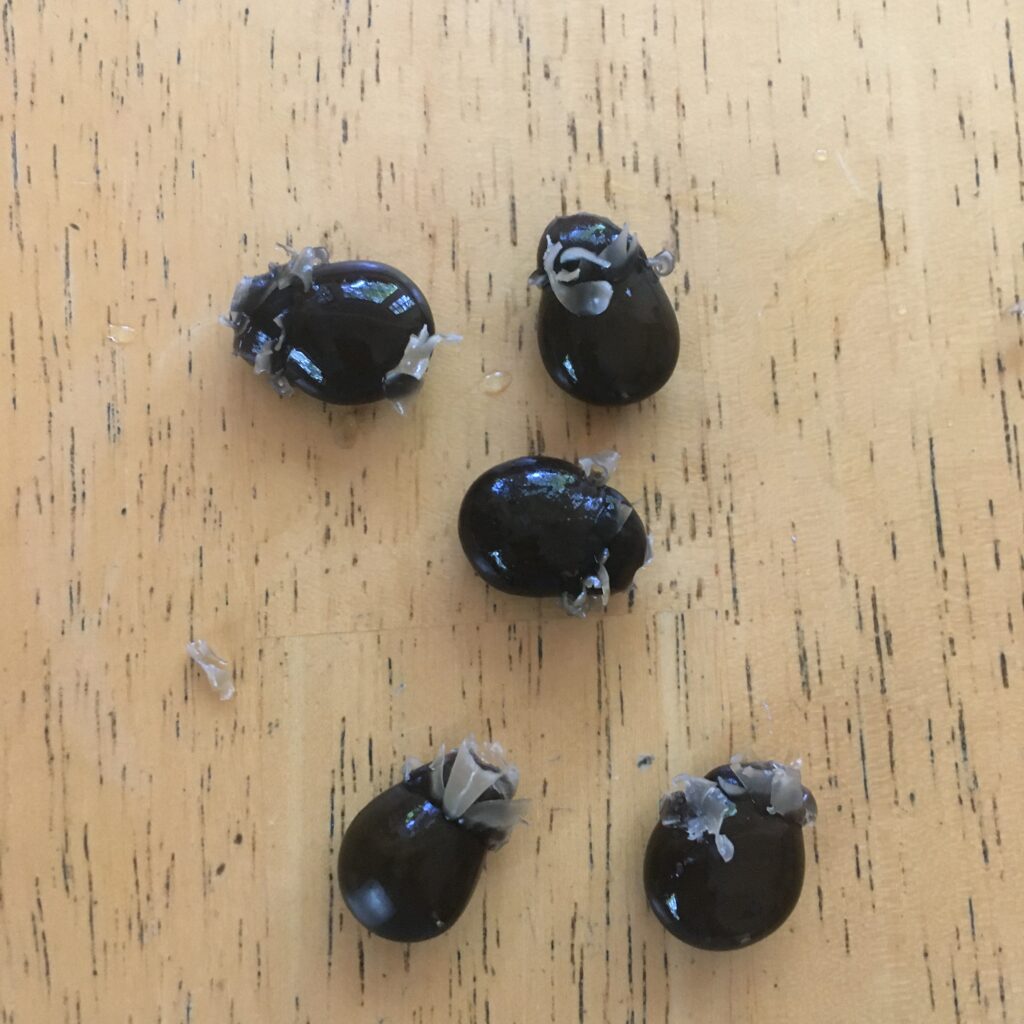
Next step was to plant the seeds. However, since many seeds benefit from soaking for twenty-four hours, I decided to try that. When I removed the seeds from the water, a membrane that was not visible when handling the seeds, had curled up. Then I planted the seeds in potting mix and about two/three weeks, little shoots were visible. It turns out that this membrane is a critical element in germinating these seeds and must be compromised for germination to occur. This can also be accomplished by using sandpaper to rub out a portion of the membrane before planting.
Now I have several seedlings for which I cannot find space since the tree requires full sun. Anyone in the Riverdale, NY area interested in a seedling or in trying to germinate my remaining seeds, is welcome to contact me while supplies last.
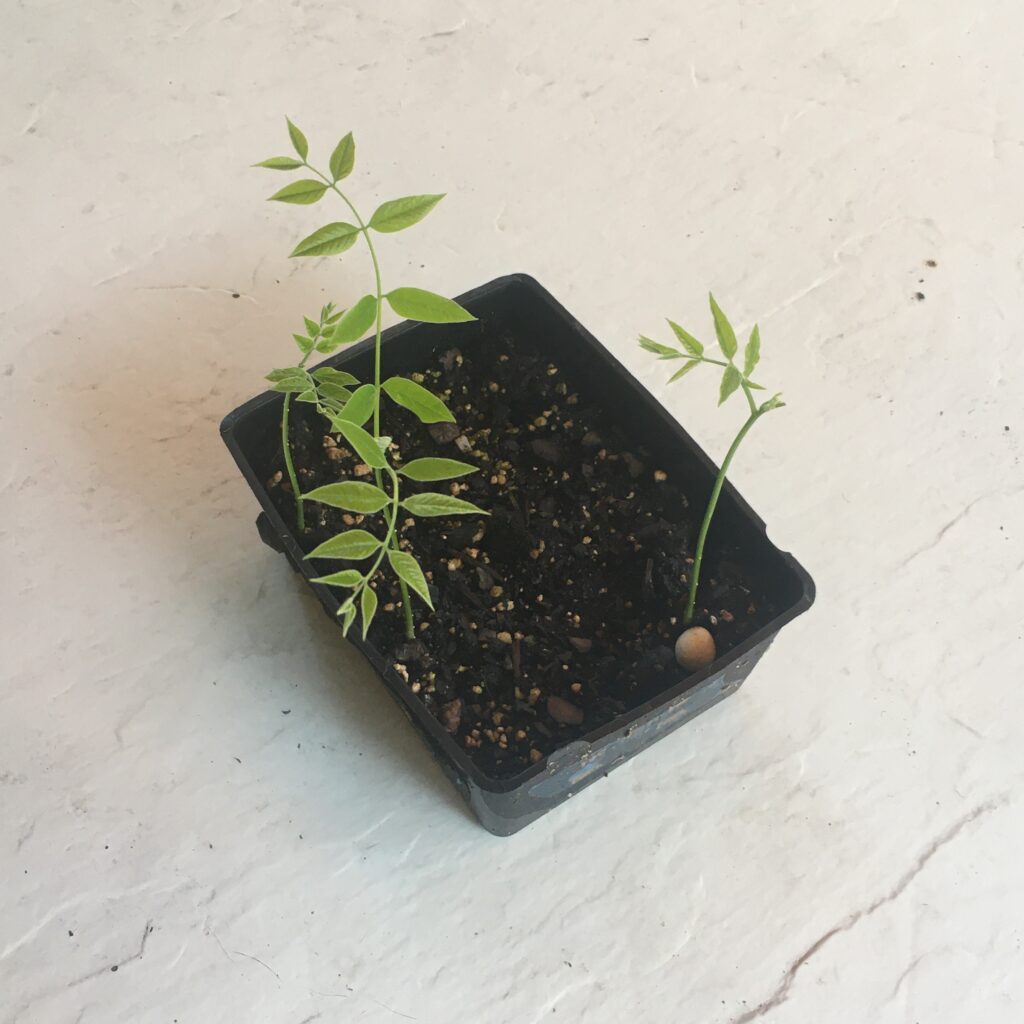

If you have enjoyed this piece, you may be interested in my book, A Habit of Seeing: Journeys in Natural Science.
Hello Sura – I ass.u.me U are a member of Riverdale Nature Conservancy. Jessica Haller has generously taken on the presidency. Maybe she could take a few plants? Also, the headmaster of Riverdale Lower School, Dr. James P Duval jduval@riverdale.edu might find a place to grow those seedlings. I met him at RNP meeting. He seems to be an avid environmentalist, and is encouraging his teachers to take up the banner, so to speak. ***ic@bceq.org***
Thank you so much. Fascinating!